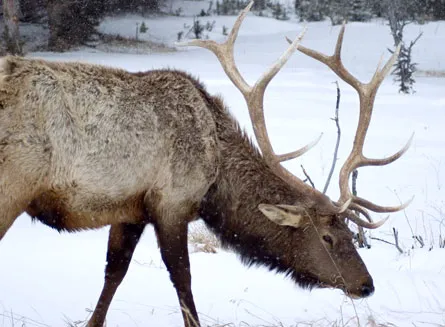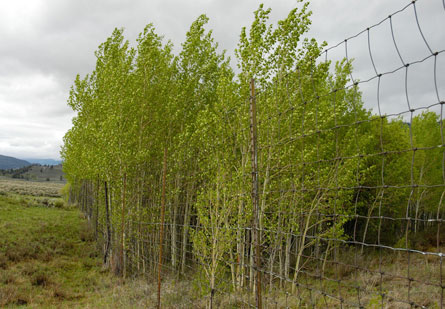One of the Rube Goldberg effects of climate change — a dwindling winter snowpack that changes elk grazing habits — might end up as a major menace to the iconic aspen trees of the Rocky Mountains.


As the climate changes, winter snow isn’t building up as deeply and densely as it used to, explains ecologist Jedediah Brodie, now a Fulbright scholar working in Borneo. To study the winter dining habits of local elk, he and his colleagues set out motion-triggered cameras in northern Yellowstone National Park. They found that skimpier snow let elk do more foraging in the high stands of aspen when grazing grass died back in winter. And comparing fenced versus unfenced aspen shoots showed that grazing elk lowered the chances that young aspen shoots would survive to maturity, Brodie and his colleagues report online October 5 in Proceedings of the Royal Society B.
Brodie is concerned about aspen in areas with declining snowpack and increasing elk populations. “Climate change, in conjunction with elk, is tearing the recipe for aspen persistence out of the cookbook,” he says.
The mix of experiments make a compelling case, says Blake Suttle of Imperial College London, a community ecologist who focuses on climate change. He welcomes the new paper’s look at the way a warming climate shifts biological interrelations. “Direct effects of climate change set the pinball in motion, but from there it never follows a straight line,” Suttle says.
Aspen already have attracted scientific concern. Broad swaths of the trees cover high slopes in the Rockies, adding a rustle from their signature shivery leaves as well as autumn drama with their distinctive yellow. In 2004, however, foresters recorded unusually rapid tree death that blighted acres across the West, diebacks that slowed only toward the end of the decade. Severe drought probably weakened the trees for other menaces, such as disease and insects.
Brodie’s work has supplied the data for an analysis showing that unprotected aspen shoots have less than a 1 percent chance of surviving until maturity unless the snowpack reaches a depth equivalent to 35 centimeters of water. A 1 percent survival rate should sustain patches of a long-lived tree like aspen, Brodie says, but he notes that most snowpack measures in the study fell short of that level, in the worrisome 10- to 30-centimeter range.
Without elk browsing young aspen, the chances of the shoots growing large enough to avoid death by elk chompers improve substantially.
Abundant snowpack itself benefits the aspen, the analysis showed. Yet, Brodie says, “The main problem with climate change for aspen is not that the temperatures are warmer, but that reduced snowpack has altered elk behavior.”






